

 marcopolo@chinatoursnet.com
marcopolo@chinatoursnet.com
Home / Henan Travel Guide/ Attraction
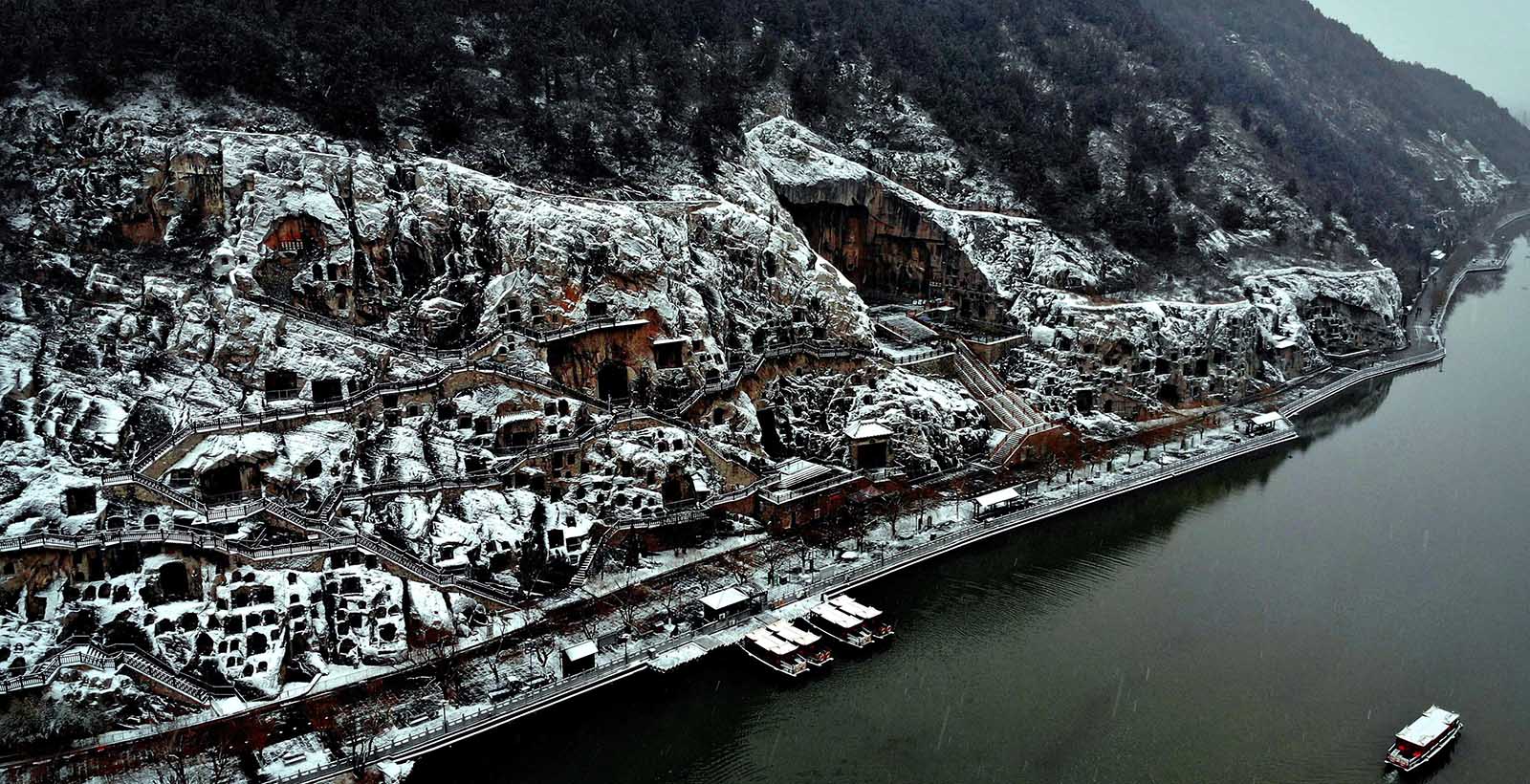
Longmen Grottoes
.png)
.png)
Longmen Grottoes
.png) Tour Code : C1742
Tour Code : C1742
.png) Type : Historic sites
Type : Historic sites
.png) City / Province : Luoyang (Longmen、Shaolin)
City / Province : Luoyang (Longmen、Shaolin)
.png) Built in : 493.BC
Built in : 493.BC
Highlights
Longmen Grottoes is one of the famous grottoes in China, start digging in North Wei Dynasty and continue constructing more than 400 years, preserving thousands of grottoes, Buddha statues, steles etc, which reflected the political, economic, religious and cultural development in ancient China.
Longmen Grottoes
The Longmen Grottoes are one of the best preservation of Chinese Buddhist art. It has tens of thousands of statues of Buddha and his disciples and located 12 kilometers (7.5 mi). The images, many once painted, were carved from the limestone cliffs of the Xiangshan and Longmenshan mountains, running from east to west. There are over 100,000 statues in the 2,345 caves, ranging from an 1 inch (25 mm) to 57 feet (17 m) in height. There are nearly 2,500 stelae and inscriptions as well as over sixty Buddhist pagodas in the area. In 2000 the site was listed as the world heritage by UNESCO.
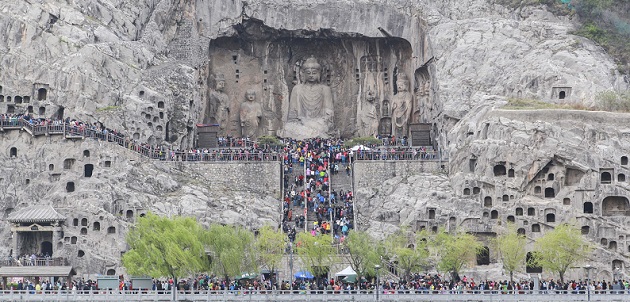
There are three famous grottoes in China. The other two grottoes are the Yungang Caves near Datong in Shanxi Province, and the Mogao Caves near Dunhuang in Gansu Province in west China. The Longmen grottoes were carved in limestone. The grottoes are located on both sides of the Yi River. Fifty large and medium-sized caves are seen on the west hill cliffs carved in the Northern Wei, Sui, and Tang Dynasties, while the caves on the east hill were carved entirely during the Tang Dynasty. From the early simple caves to the more skillful carvings of statues of Buddha, the style was more and more mature and sophisticated as time passing by.
The origin of Longmen Grottoes was dated back to the reign of Emperor Xiaowen of Northern Wei dynasty when he moved his capital to Luoyang from Datong. The grottoes were carved covering a period from 493 AD to 1127 AD, in four different periods. The first period originated from the Northern Wei dynasty (493-534). The second period was from 524 to 626, in the reign of the Sui dynasty (581-618) and the early part of the Tang dynasty (618-907). In the third period, it was from 626 to the mid 8th century. The last period was from the late of the Tang dynastic to the Northern Song Dynasty. It came to an end between the Jin and Yuan dynasties.
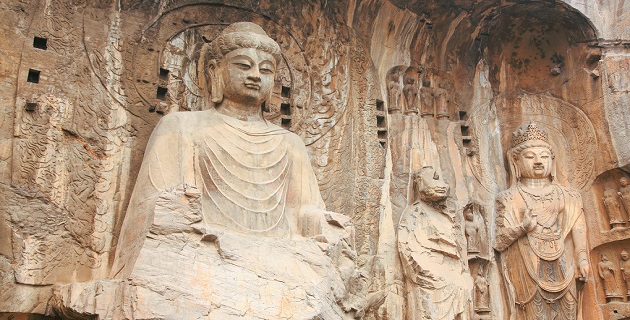
Ming dynasty from 1368 to 1644, and the Qing Dynasty from 1644 to 1912, the Longmen Grottoes received recognition both domestic and exotic.During the Second World War, Japanese looted the grottoes and took many statues back to Japan. Many relics are now in Japanese museums.With the founding of the People’s Republic of China in 1949, the grottoes have been declared as protection by government.
Most famous caves in Longmen Grottoes:
Fengxian Temple
Fengxian Temple was built in the Tang Dynasty and is the largest grotto in Longmen Temple with 36 meters in wide and 41 meters in length. Nine major figures were built in accordance with the rite of Buddhism and relationships with the artists. The statue of Vairocana Buddha, sitting cross-legged on the eight-square lotus throne, is 17.14 meters in height with a four meters head and a 1.9 meters ears. Buddha Vairocan has a full figure, a solemn and kind expression and an elegant smile. According to the record on the epigraph, the Empress Wu Zetian once took part in the ceremony of “Introducing the Light” (The Buddha give off lights to others). Some Buddhas have dignified and genial expressions, while others are majestic and fiery in the temple.
Wanfo Cave
Lotus-Flower Cave was finished in 680, it is a typical cave carved in Tang Dynasty with two rooms and a square flat roofs. Its name originated from the 15,000 small statues of Buddha chiseled in the southern and northern walls of the cave. The main Buddha Amida sits on the lotus Sumeru throne with a composed and solemn expression. The wall behind Amida was carved with 54 lotuses with 54 Bodhisattvas in various shapes and moods. Additionally, there were carved with singers and dancers on the wall. The singers carried with various musical instruments and the dancers danced in the music. On the southern wall outside the cave was carved with a statue of Kwan-yin with a height of 85 centimeter, with a pure bottle in the left hand and deer's tails (as a symbol for brushing off the dust in spirit) in the right hand. This figure was best designed and was listed as an idol of Bodhisattva statues of Tang Dynasty in Longmen.
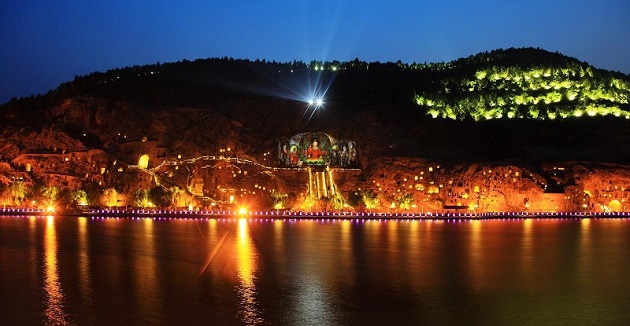
Guyang Cave
Guyang Cave was the earliest cave. There are three tiers of niches carved on the northern and southern wall in the cave, with hundreds of statues, and most of the statues engraved with the names of the artists, the dates and the reasons for carving them. The sculptures in various shapes and patterns were representations of the Gandhara Art style after the grotto art was transmitted to Luoyang.
Binyang Cave
After the constructions of Guyang Cave, the Northern Wei Dynasty constructed many large caves, which are the northern, southern, and middle Binyang Caves. The middle cave, carved from 500 to 523, was the only one of the three finished during period of the Northern Wei. There are 11 big statues in the cave.
Lotus Cave (Lianhua Cave)
Chiseled grottoes from the natural limestone were popular in Longmen, and the Lotus Cave is the most typical. Differing from sitting statues, Sakyamuni had standing figure and told that he had trudged a long distance to pass around Buddhism from India to China. A huge relief with a lotus flower was engraved on the dome with seedpod in the center, petals in the outer and leaf in honeysuckle patterns. Around the lotus there were six flying musicians as if they were dancing in the music.
Travel Map
Recommend Tour
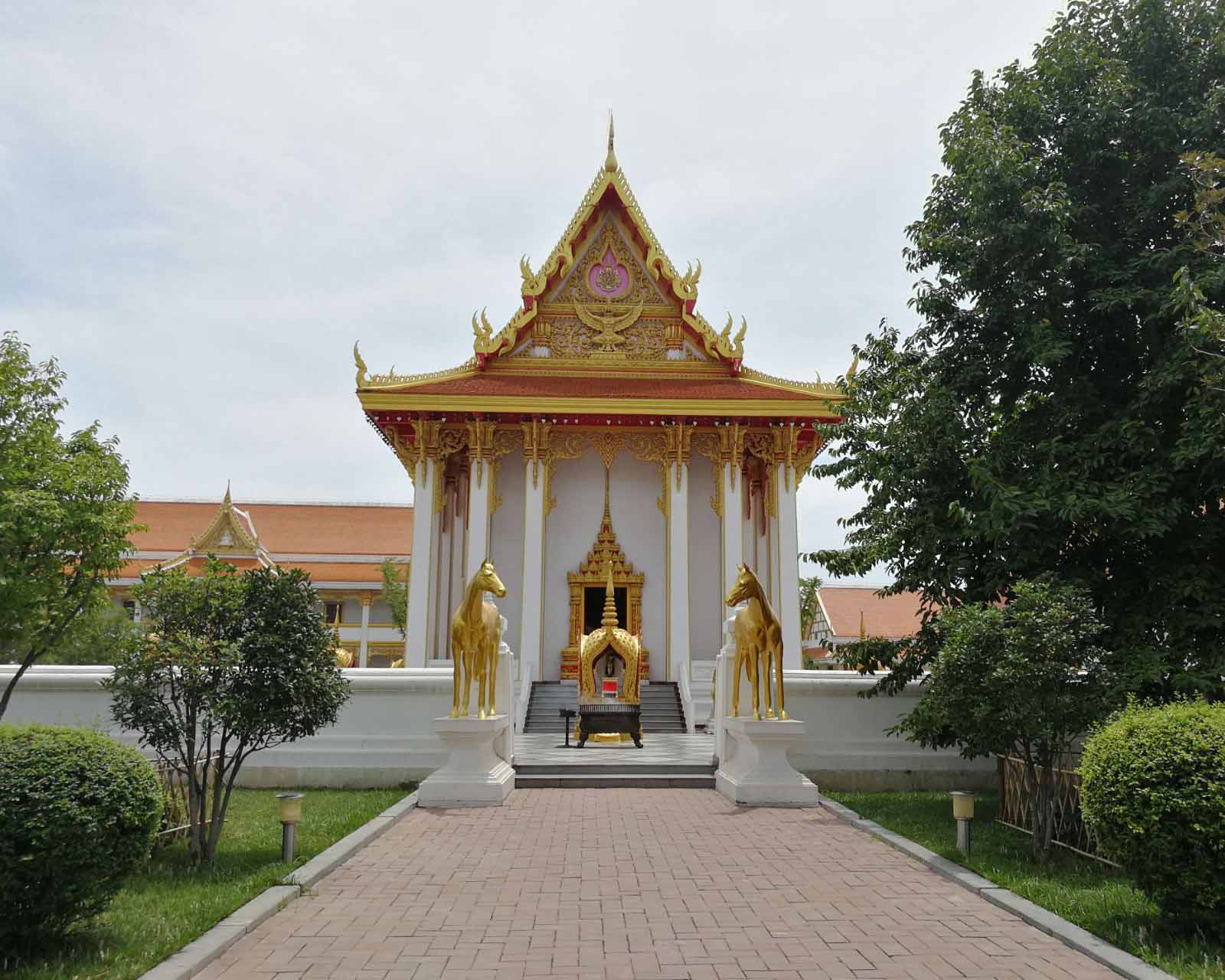
5 Days Xian-Luoyang-Shaolin Temple Chinese Kungfu Tour
5days
Once the terminus of the Silk Road and a melting pot of cultures, religion and home to emperors, monks, merchants and warriors, the glory days of Xian are unending. Visit the most famous attractions of Xian as well as Luoyang over this 5 days trip on a private tour with a professional guide and immerse yourself in the best-preserved "City Wall" that still remains intact, the UNESCO world heritage "Terracotta Warriors and Horses Museum" and the leader in the Buddhist world "Great Wild Goose Pagoda", among other must-see attractions before discovering the rich cultural heritage of Luoyang.

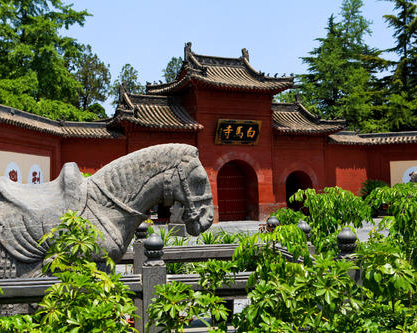
3 Days Luoyang History Exploration Tour
3days
Henan is the cradle of Chinese civilization and plays an important role in China's history with over 5,000 years of history. It is one of the eight great ancient capitals in China with numerous historical and cultural heritage sites. Travel to the quintessence of traditional Chinese culture and historical relics, enjoy your wonderful China tour.

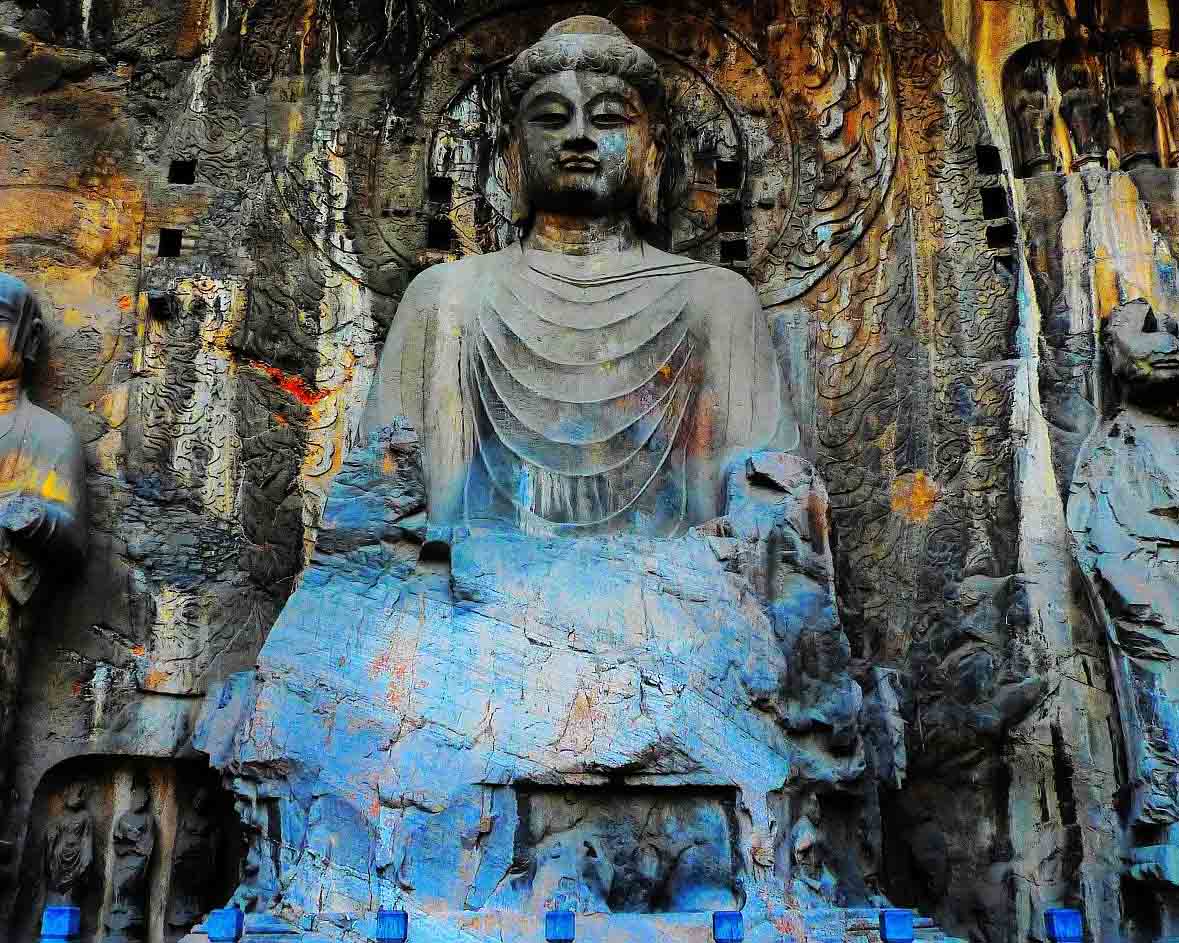
11 Days China Tour of Beijing, Xian, Shanghai with Chinese Shaolin Kungfu
11days
This 11 days tour makes it possible for you to ingeniously visit the most famous areas in China. In Beijing, you see Tiananmen Square, Forbidden City, Temple of Heaven, Summer Palace, Badaling Great Wall and Hutong areas. In Luoyang, you explore the Mount Song, Shaolin Monastery, Longmen Grottoes and White Horse Temple. In Xian, you visit Xian City Wall, Terracotta Warriors, Great Wild Goose Pagoda, and Shaanxi History Museum. In modern Shanghai, you discover Yu Garden, Chenghuang Temple, Bund, Old Street, Bund and Nanjing Road. Besides, experience the rapid development of China by taking high-speed railway.

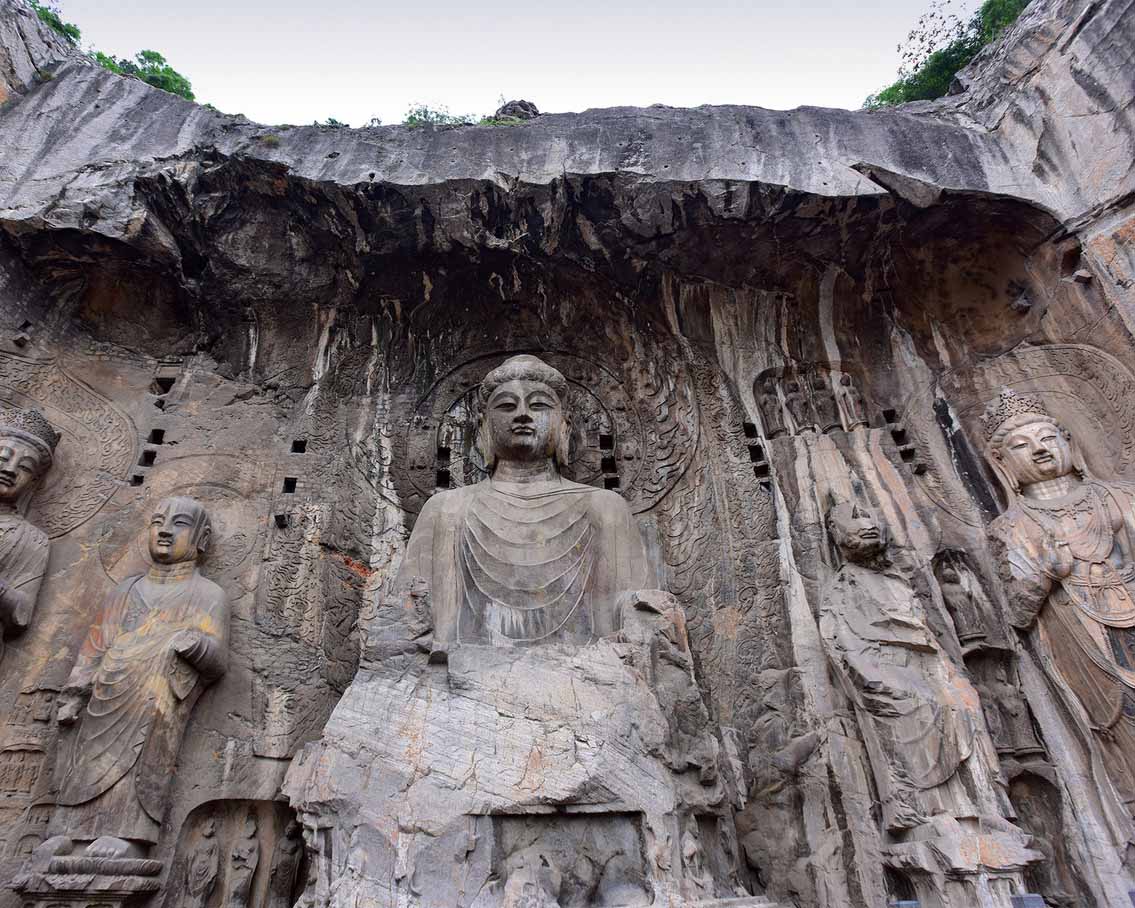
1 Day Luoyang Classic Tour
1days
On this tour, stroll around the halls and pavilions of the White Horse Temple, considered as the birthplace of Chinese Buddhism; feast your eyes into the caves, statues, stupas in Longmen Grottoes, one of four biggest Grottoes in China; immerse yourself into the dazzling Shenzhou Peony Garden or explore history from Luoyang Musuem.

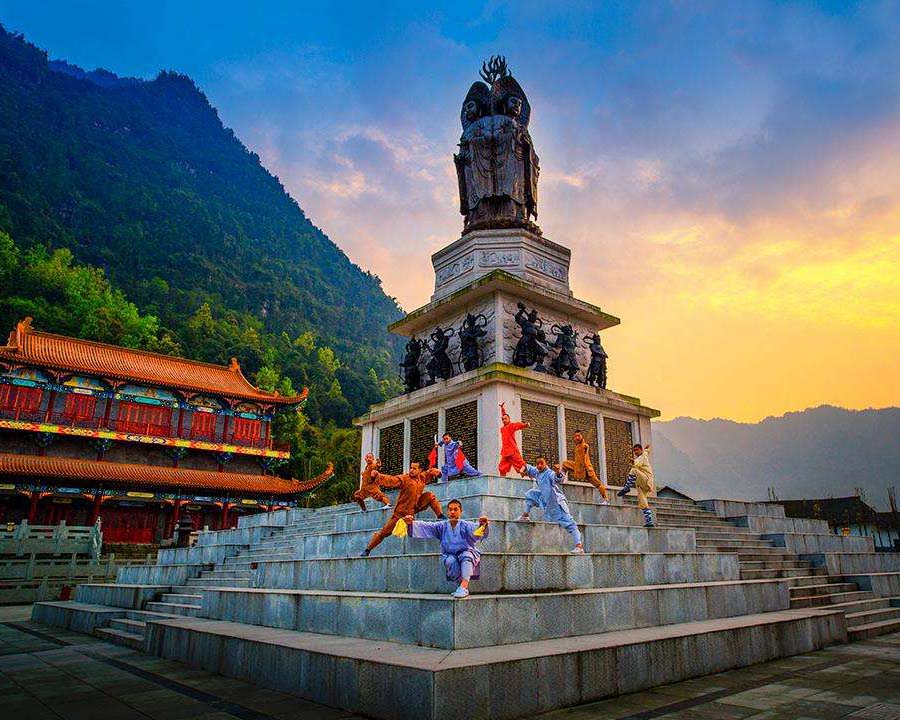
2 Days Luoyang Essence Tour
2days
Join this private 2 days Luoyang tour to explore the most important historical highlights, explore history from Chariot and Horse Pits and White Horse Temple; marvel at the magnificent Longmen Grottoes, one of the largest Grottoes in China; be enchanted by Shaolin Monastery, the cradle of Chinese Kungfu.

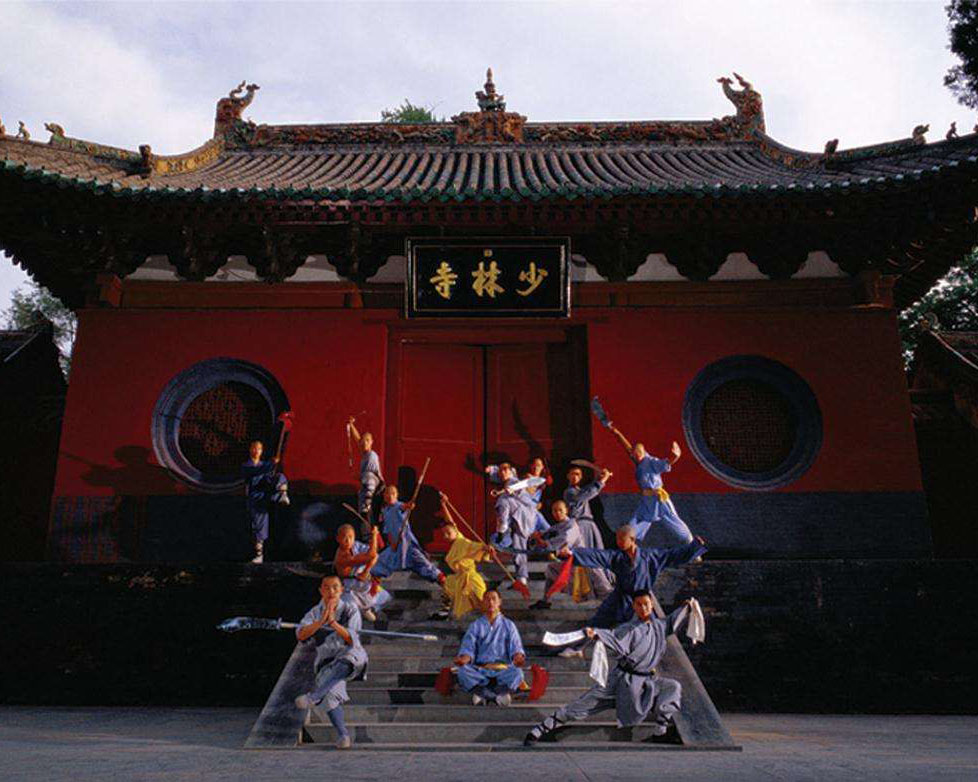
1 Day Luoyang Tour: Shaolin Temple and Longmen Grottoes
1days
A trip to Henan province will not only feast your eyes but also satisfy your appetite for adventure. Appreciate the treasure house of ancient Buddhist cave art at the Longmen Grottoes; experience the Kung Fu legends in Shaolin Temple; Getting into the great natural and historical scenery to seek unique oriental culture at the best price out there will surely create lifetime memories!

Answers to questions
 Marcopolo@chinatoursnet.com
Marcopolo@chinatoursnet.com


Phone:+86-13683536536
WhatsApp/iMessage:+86-13683536536
WeChat:chinatoursnet
Longmen Grottoes Photos
.png)
.png)
.png)
.png)
.png)